The end of Wall Street as we know it! Fascinating images show the transformation from banking capital of the world to luxury living
The last bank has left Wall Street.
But that doesn’t mean the area that was once the center of American and global finance is dead.
New York’s financial district is being reinvented as a place to live, with offices increasingly being converted into luxury apartments and condominiums with movie theaters, swimming pools and bowling alleys.
JP Morgan’s move from 45 Wall Street in April came 150 years after the bank, which was located nearby at No. 23, began its journey to become the world’s largest.
The banking exodus first began after the 9/11 terrorist attacks in 2001 and accelerated as remote working exploded during the pandemic, rendering expensive office space redundant.
In 2000, banks occupied 5 million square feet on Wall Street. Today, that number is down to a few hundred thousand, says broker John Santora told the Wall Street Journal.
Fascinating images now show how the former banks of Manhattan’s Financial District have been transformed into luxurious new residential buildings with upscale amenities.
One Wall Street
One Wall Street offers stunning panoramic views of the Statue of Liberty
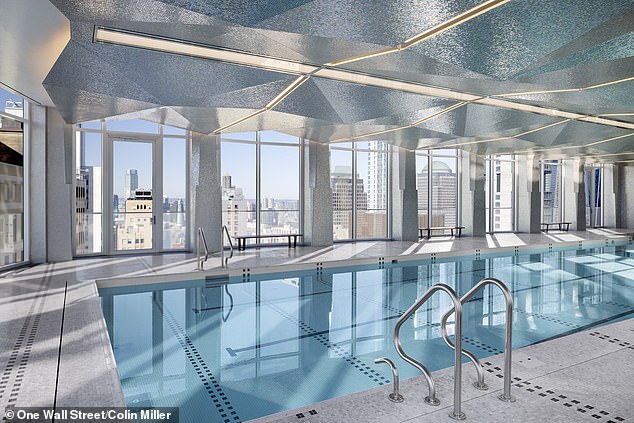
Amenities include a glass-fronted ‘Sky Pool’, private restaurant and 410 square metre terrace
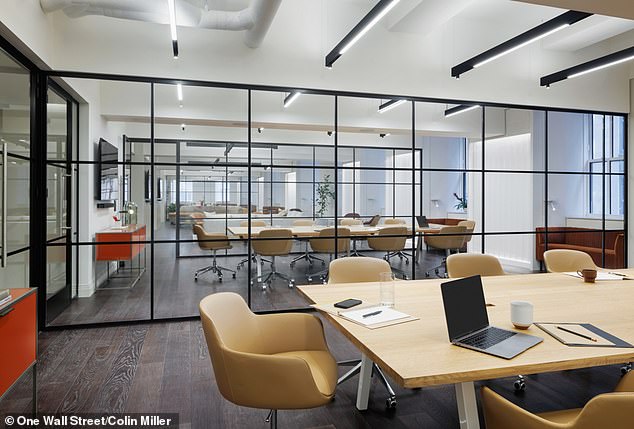
The luxurious building offers space for home workers
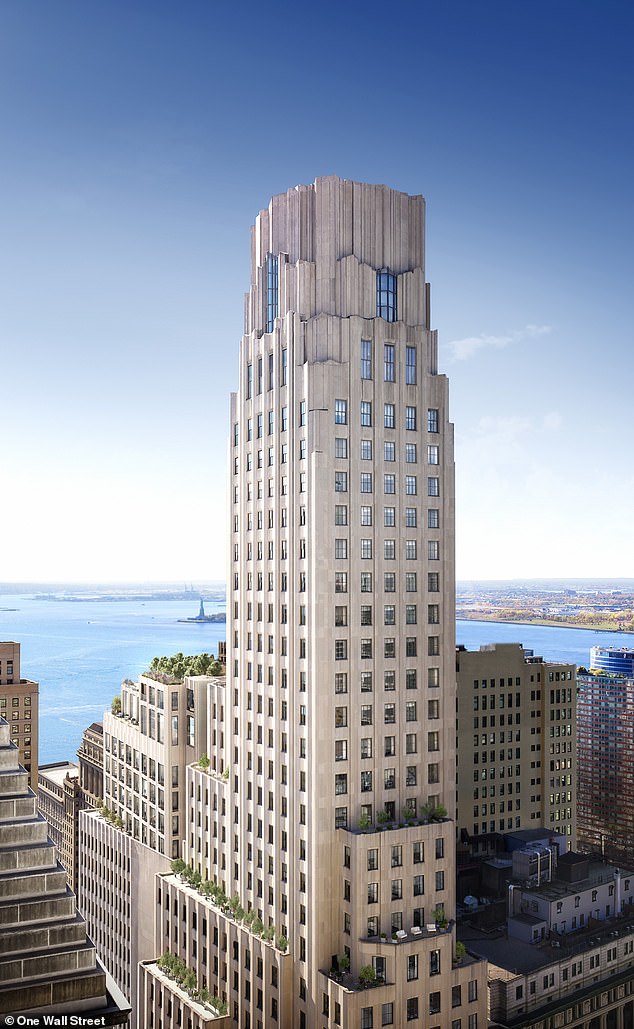
The iconic Art Deco skyscraper was designed by Ralph Walker in 1931 as the headquarters of the Irving Trust
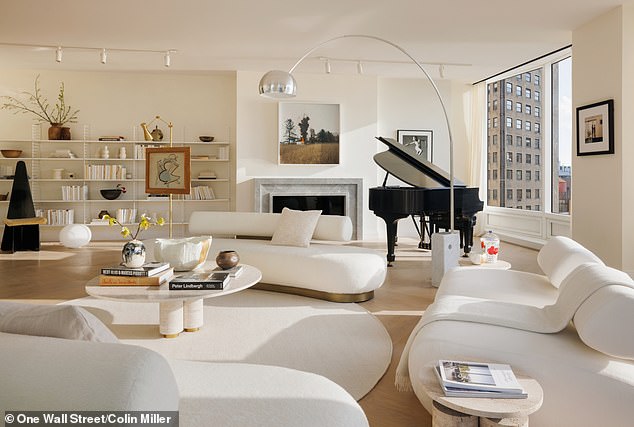
Apartments in the building have come on the market for up to $12.75 million
One of the most luxurious repurposed buildings is the iconic Art Deco skyscraper One Wall Street.
The 117,000-square-foot building, which Ralph Walker designed in 1931 as the headquarters for the Irving Trust, has been converted into 566 luxury homes listed for up to $12.75 million.
“One Wall Street, in the heart of the iconic Financial District, is one of New York City’s most important buildings, both in history and scale, and has set the standard for residential transformations,” developer Harry Marklowe said in a statement.
“The aim was to transform empty spaces into carefully redesigned homes that can stand the test of time and still meet the future demands of modern living,” he explained.
The recently renovated building now features a glass-fronted “Sky Pool” with panoramic views of downtown Manhattan, a private restaurant and a 4,500-square-foot terrace.
Other amenities include the exclusive One Club, a co-working space, full-time doormen and a fitness and wellness center.
63 Wall Street

The 1929 building, formerly the offices of investment bank Brown Brothers & Co, now houses
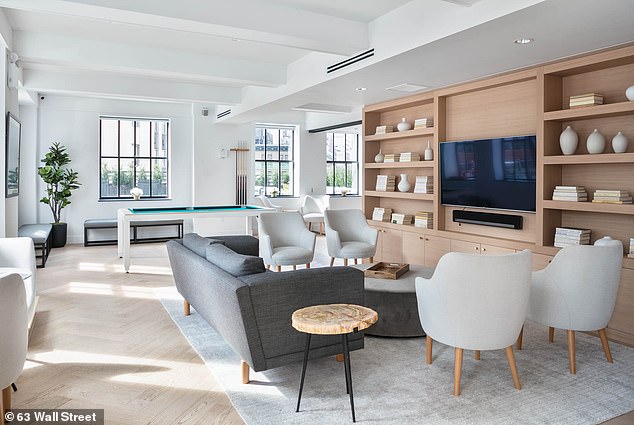
63 Wall Street represents one of the first bank-to-residential conversions
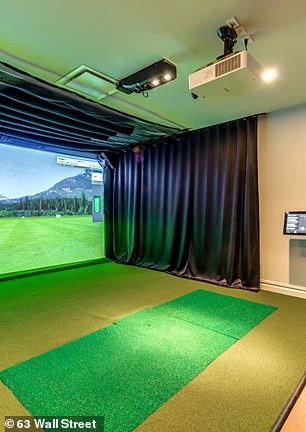
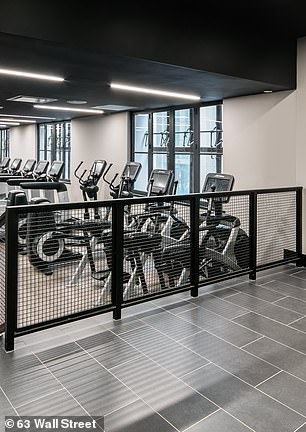
The building features a speakeasy, a golf simulator room and a three-story fitness center
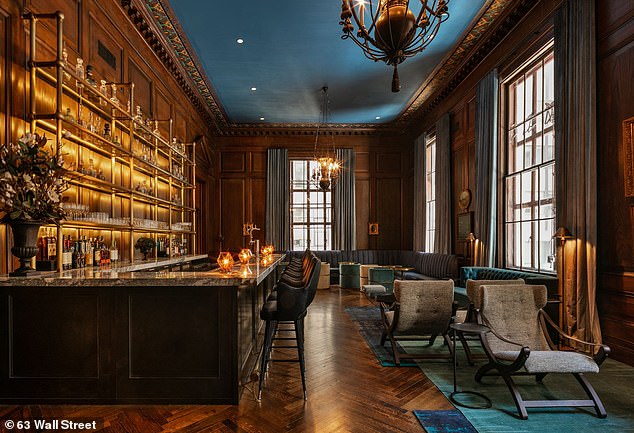
The speakeasy bar and lounge is an exclusive space, for residents only

Residents can also enjoy valet parking services, a rooftop terrace and a children’s playroom
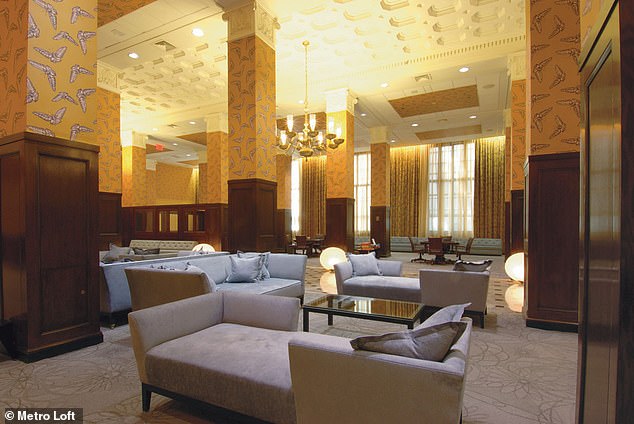
The 37-story, 37,000-square-meter building, which served as office space until 2003
This monumental building from 1929 was once home to the investment bank Brown Brothers & Co. and is now home to some of the city’s most luxurious homes.
The 37-story, 377,000-square-foot building, which served as office space until 2003, now contains 476 apartments.
63 Wall Street was one of the first locations to be converted from a bank to a residential building. It was redesigned by Metro Loft Management and renamed The Crest.
The building now features a private speakeasy and resident lounge, a golf simulator room, a three-story fitness center and co-working spaces.
Residents can also enjoy valet parking, a 24-hour doorman and concierge service, a rooftop terrace and a children’s playroom.
67 Wall Street
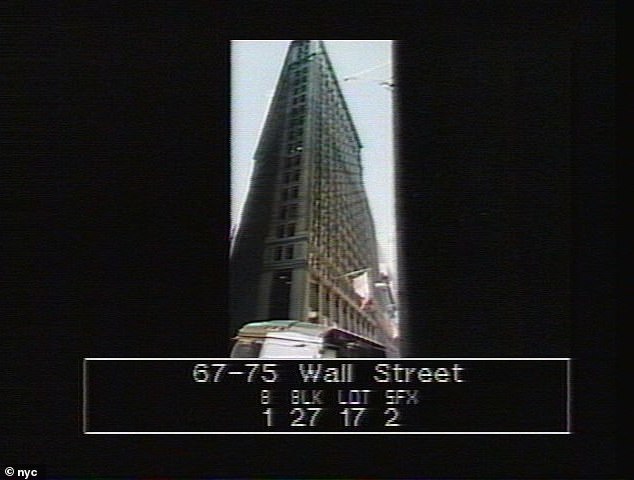
The 25-story building before it was converted by Metro Loft Management in 2006
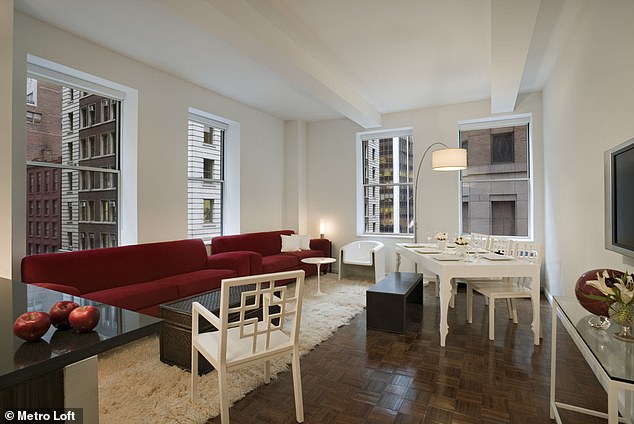
Rental properties benefit from historic double-walled, extra-large windows
Not far away is 67 Wall Street, built in 1921 for the Munson Shipping Company.
The 25-story building was also renovated by Metro Loft Management in 2006 and now offers 331 apartments spread over 27,500 square meters.
The building’s large gold doors still bear the Munson name and its historic exterior has been preserved with coats of arms such as the ‘Munson Steamship Line’ logo and 1920s-style decorations.
The traces of that time are clearly visible in the wide range of modern convenience foods, including Sweetgreen, Le Labo and Joe the Juice.
There are indoor units available for rent ranging from studios to three-bedroom homes, all of which feature historic, oversized windows.
20 Broad Street
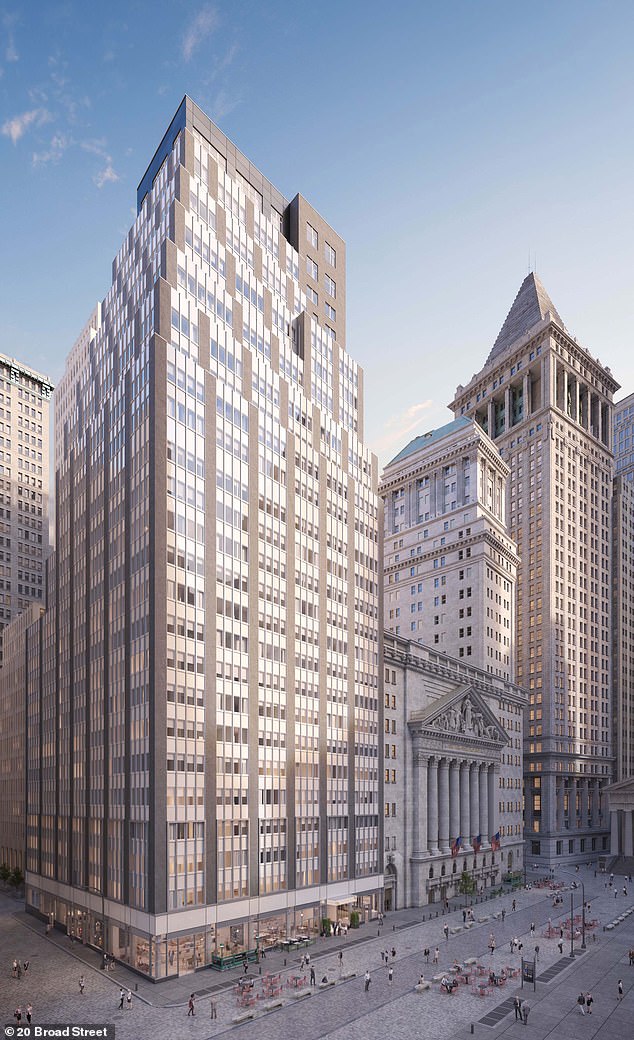
20 Broad Street, built in 1956, was once reserved for the adjacent New York Stock Exchange
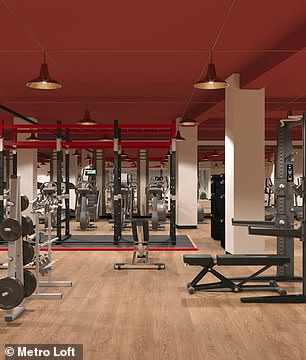
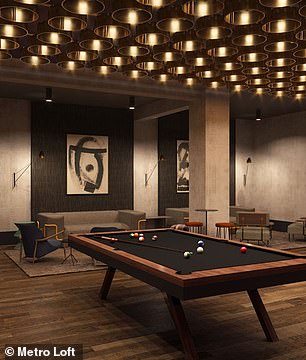
Amenities include a 24-hour concierge, a games room, an open-air theater, a fitness center and a library
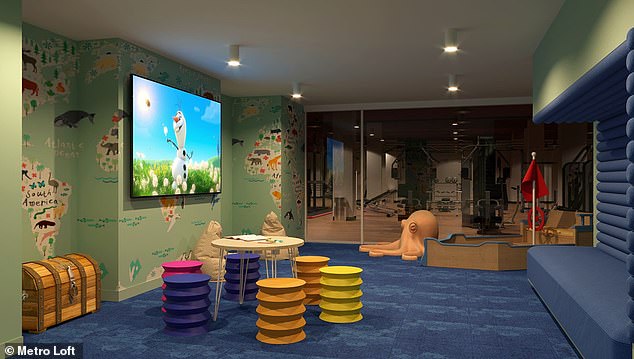
For residents with young families, a children’s playroom is also available
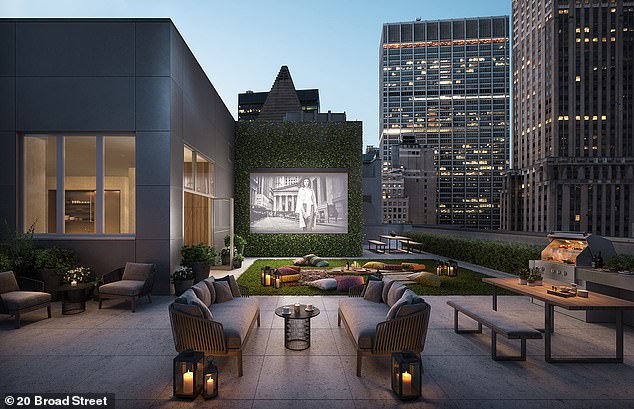
All residents have access to a roof terrace with cinema screening and luxury furniture
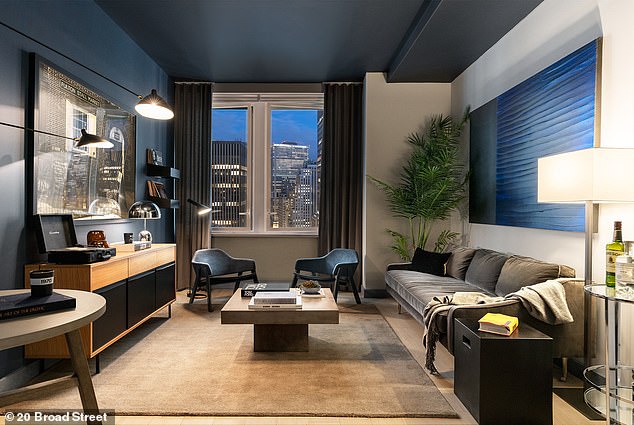
Apartments are designed around open living spaces with high ceilings and large windows
Broad Street, originally a canal, is one of the oldest streets in Manhattan.
20 Broad Street, built in 1956, was once intended for the adjacent New York Stock Exchange before being designated as a bank building.
Metro Loft and architectural firm CetraRuddy have converted the building into 533 residential apartments.
The apartments are designed around open living spaces with high ceilings and large windows, allowing you to make the most of the historic neighbourhood.
Some homes have their own outdoor space and all residents have access to a roof terrace.
Other amenities include a 24-hour concierge, a games room, an open-air theater, a fitness center, a library and a children’s playroom.
Pearl House
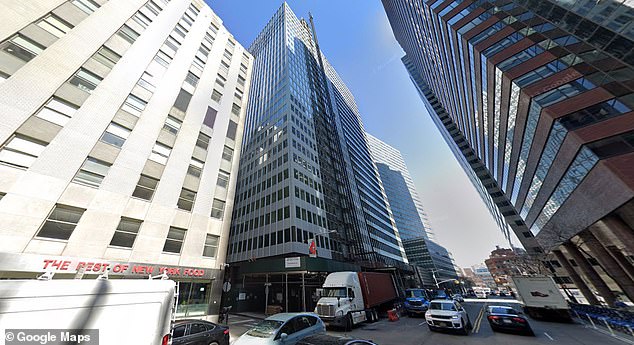
Pearl House, a 1970s office building, has been converted into a series of luxury apartments
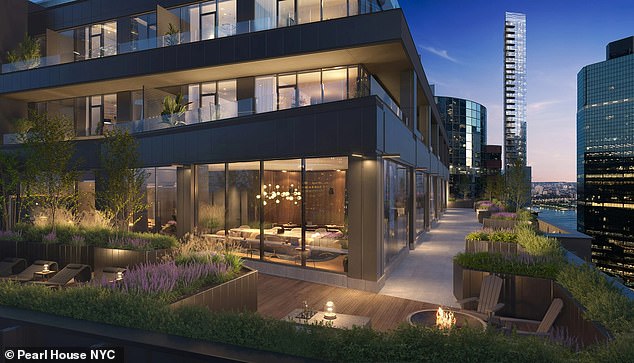
On the edge of FiDi’s waterfront, Pearl House offers stunning views of downtown Manhattan

Rental properties range from $3,600 to over $7,000 per month
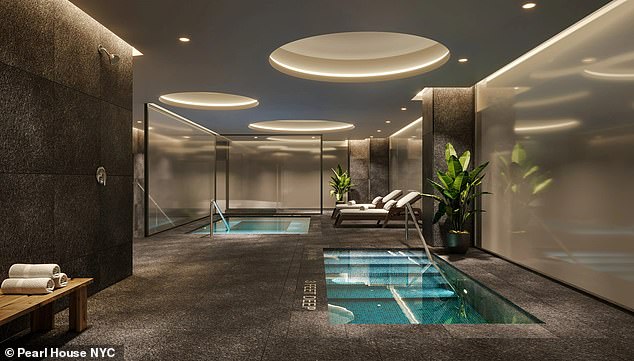
Amenities include a bowling alley, games room, bar and spa
On the edge of FiDi’s waterfront lies Pearl House, a 1970s office building that now houses a series of luxury apartments.
Developer Vanbarton Group took the unassuming office building and built a completely new lobby, added five floors, bringing the total to 30, and repurposed mechanical shafts to create 588 new units and amenity spaces.
Monthly rents range from $3,600 to over $7,000 and amenities include a bowling alley, game room, bar and spa.
